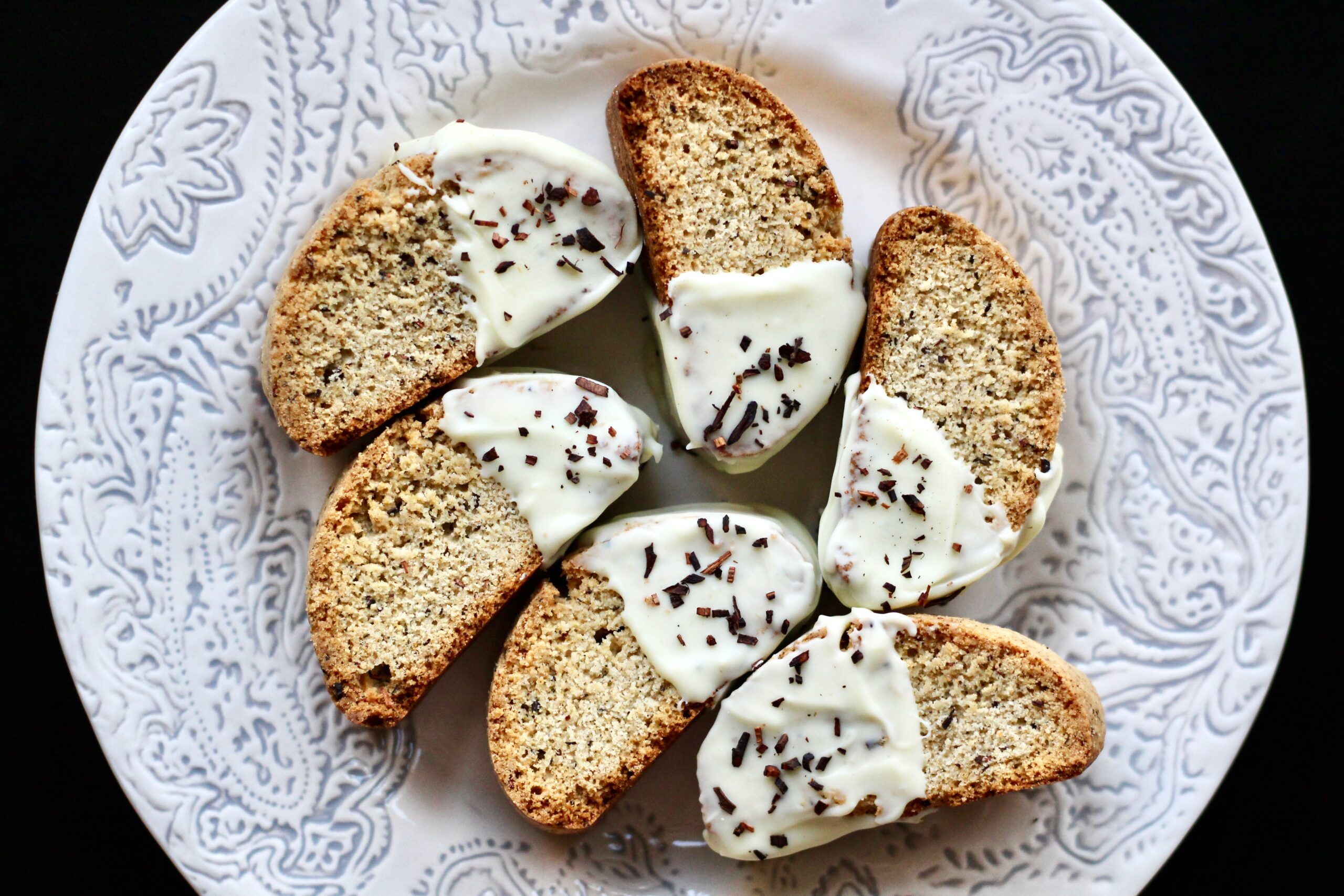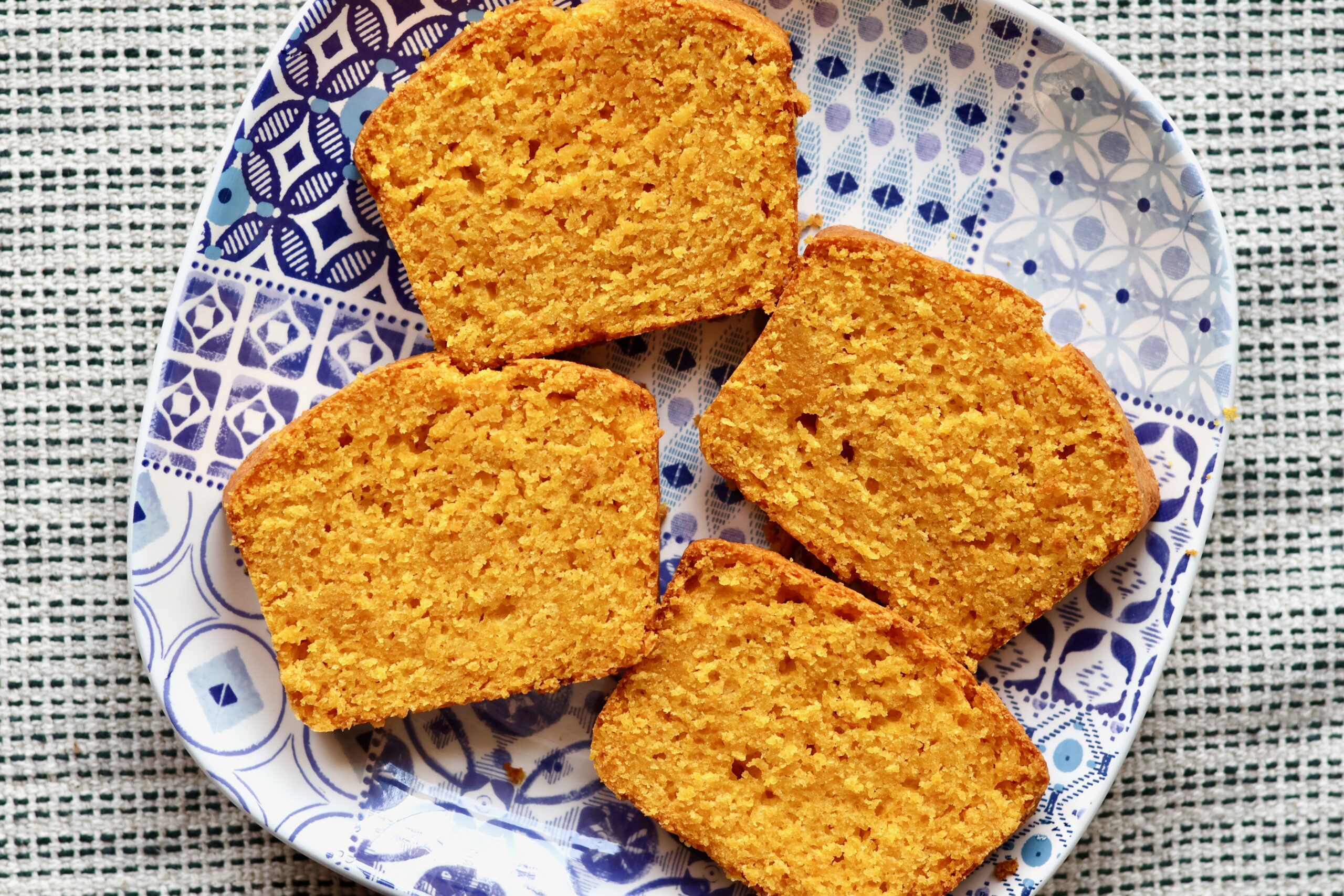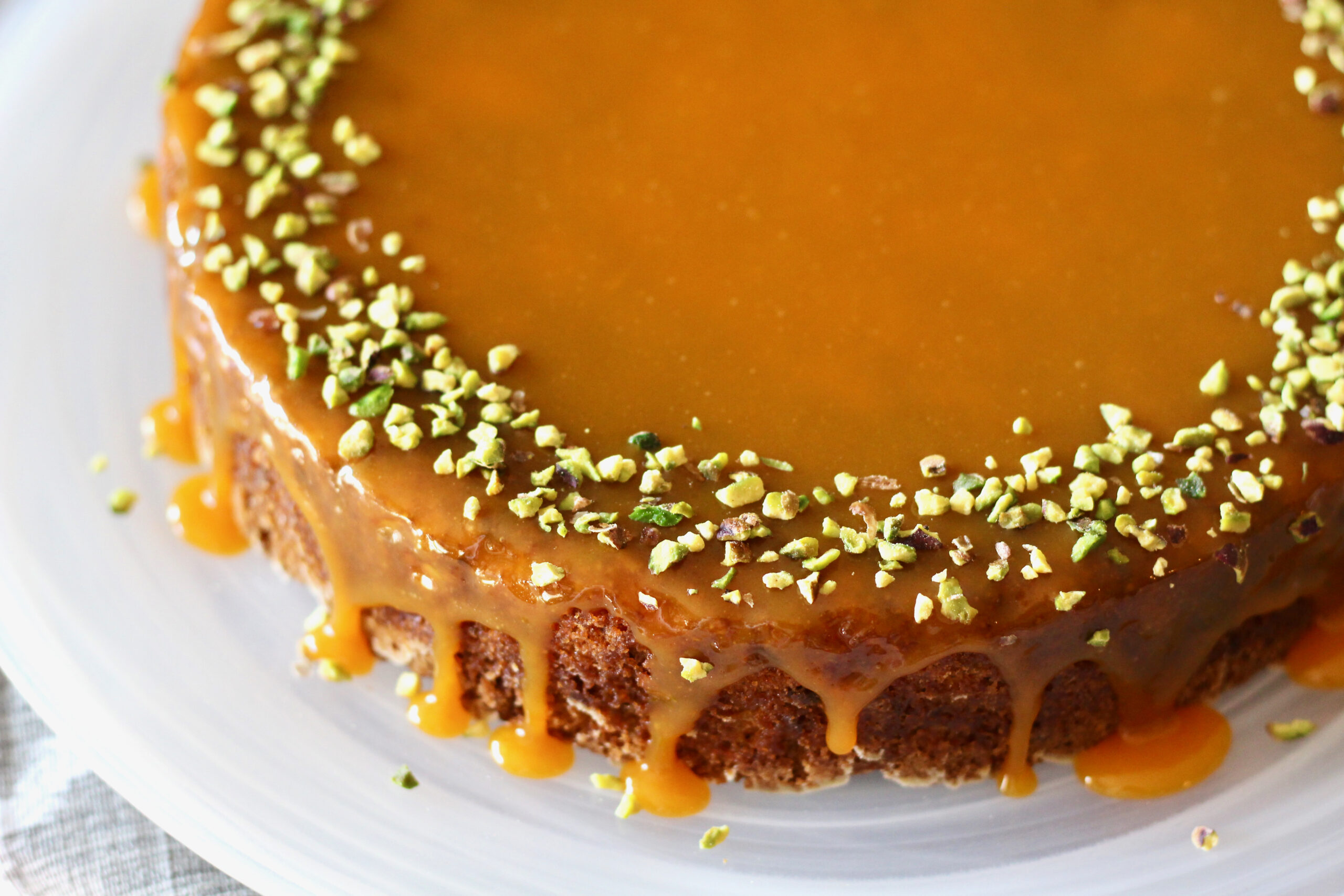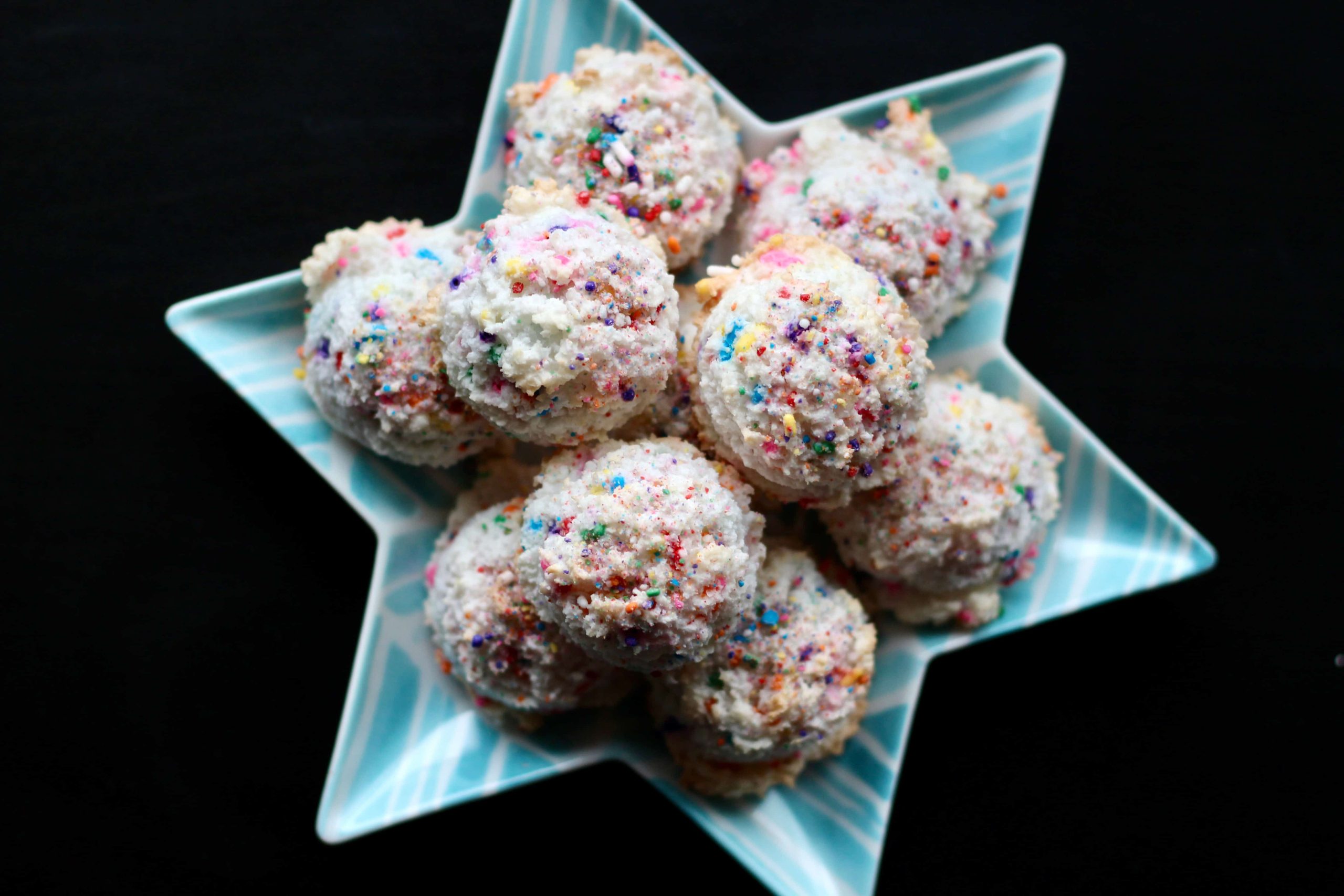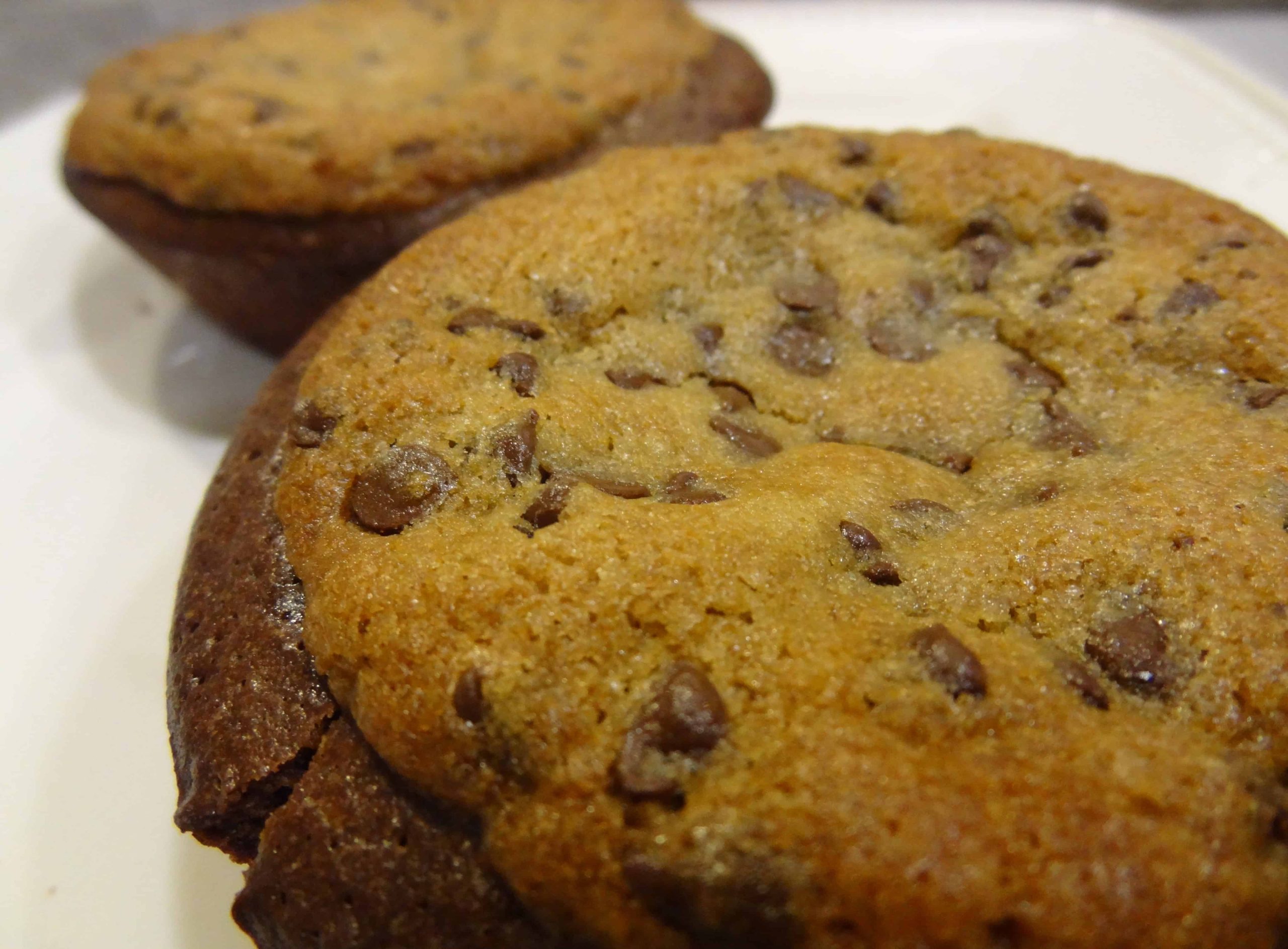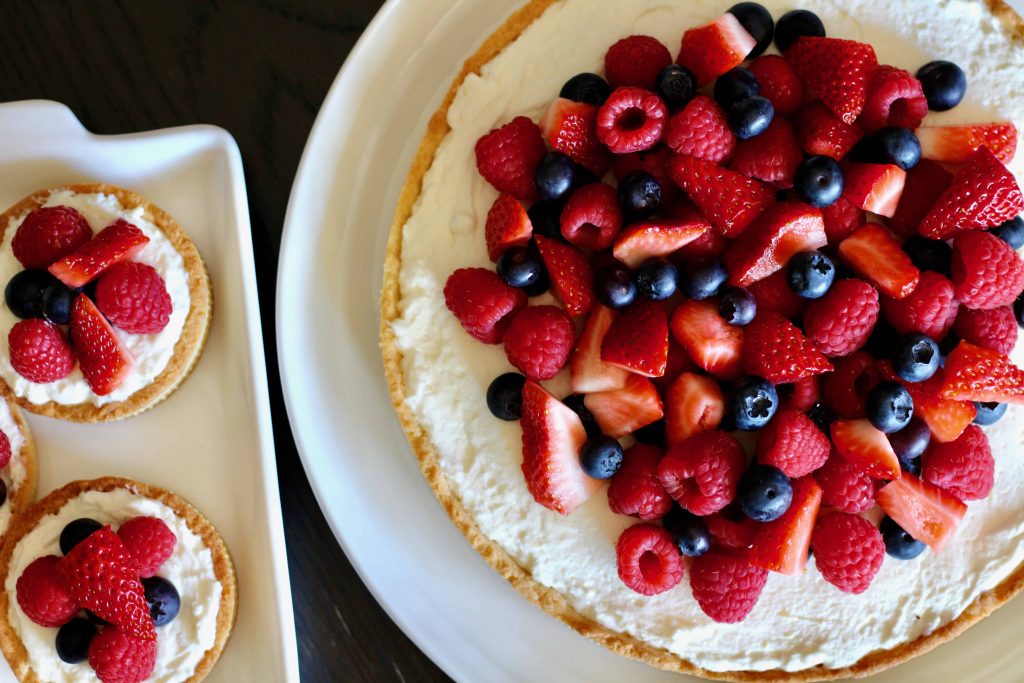
If you’ve read this blog in the past, you may have a vague recollection that I was writing a series about Italian desserts at one point. As I’ve been less active in the past few years, I sort of trailed off, but it’s always been something I wanted to return to. The premise was that I was writing about regional desserts in places I’ve visited and wanted to commemorate and bring light to, including some history and culinary context. When I passed through Matera in the south of Italy six years ago for lunch on the way to the Amalfi Coast, I knew nothing about it— it simply looked like the most major blip on the map in Basilicata, the region between Puglia and Campania, aka the “arch” of the Italian Boot. What I saw there was incomparable to anything I’d ever seen, and I knew I had to get back there to actually visit, explore, and wrap my head around it.
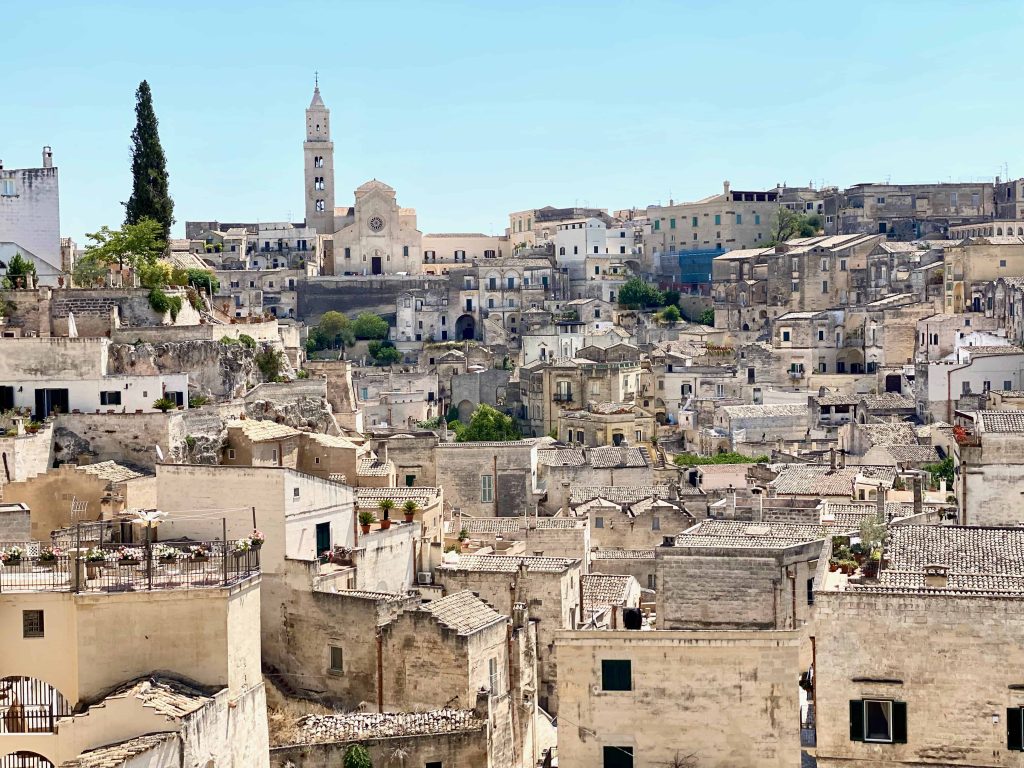
And what, exactly, is it that I saw? We parked our rental car on a fairly unassuming modern-city street and began wandering to find a restaurant. We stumbled upon some ancient ruins (which happens constantly in Italy– NBD, right?!) and a lookout point, which of course warranted investigation. That moment remains seared in my memory; I can best describe the view before me as a monochromatic lasagna of ancient stone buildings cascading down into a valley, complete with rose-windowed cathedral crowning the top of the ridge. What was this incomprehensible place?! It was technically “Italy”, but seemed a world away from Rome or Venice or Siena…

After a delicious lunch of two types of local pasta and a traditional legume stew, we descended into the valley to learn more. Most buildings were fashioned from the same whitish stones, and a lot of it looked old-as-old-gets. Sadly we didn’t have time to explore further, as a long drive to Positano beckoned.
But this place, Matera, has haunted me ever since. I haven’t stopped thinking about the cave openings staring back at me like solemn eyes filled with untold history; the buildings that seemed stacked impossibly one upon the other, spilling down to the valley bottom. I set about researching the history and the tasty cuisine that was different than anywhere else I’d been in Italy. What I learned is that it is one of the oldest inhabited places on Earth, dating back about 9,000 years. Ancient civilizations made homes in caves called sassi, which sloped down into two valleys– the one I saw, and the other on the opposite side of the cathedral (known as the cave districts of Sasso Barisano and Sasso Caveoso, respectively). I couldn’t believe I had stumbled on this impossible place with no time to explore. I knew I would have to come back as soon as possible…

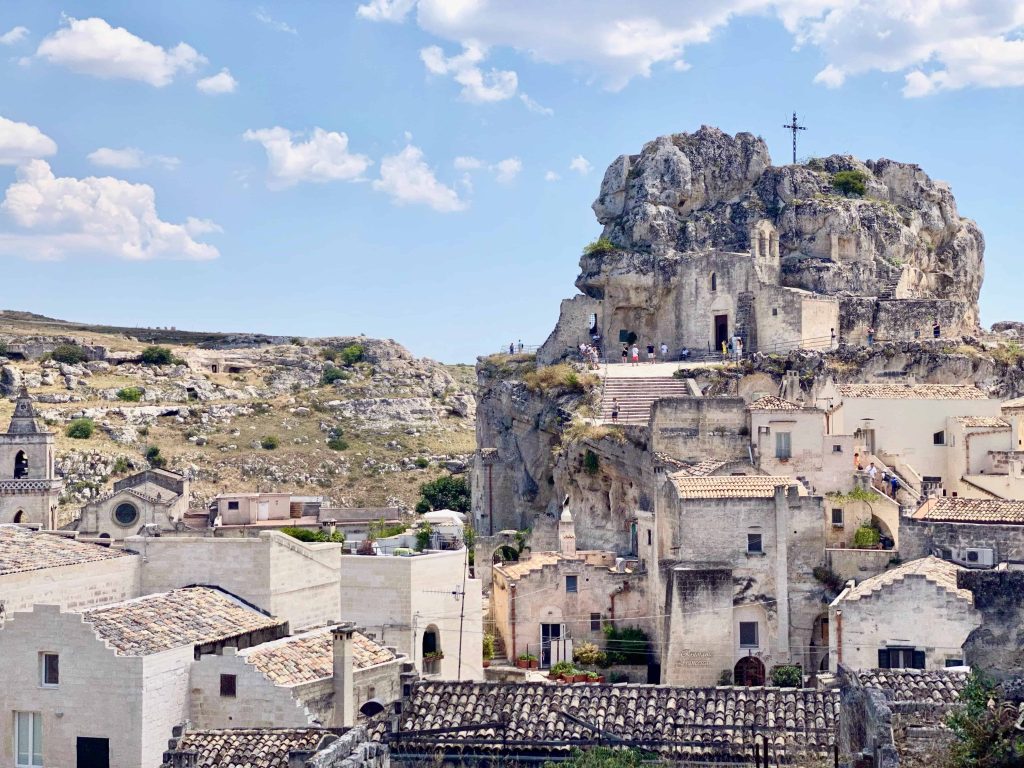
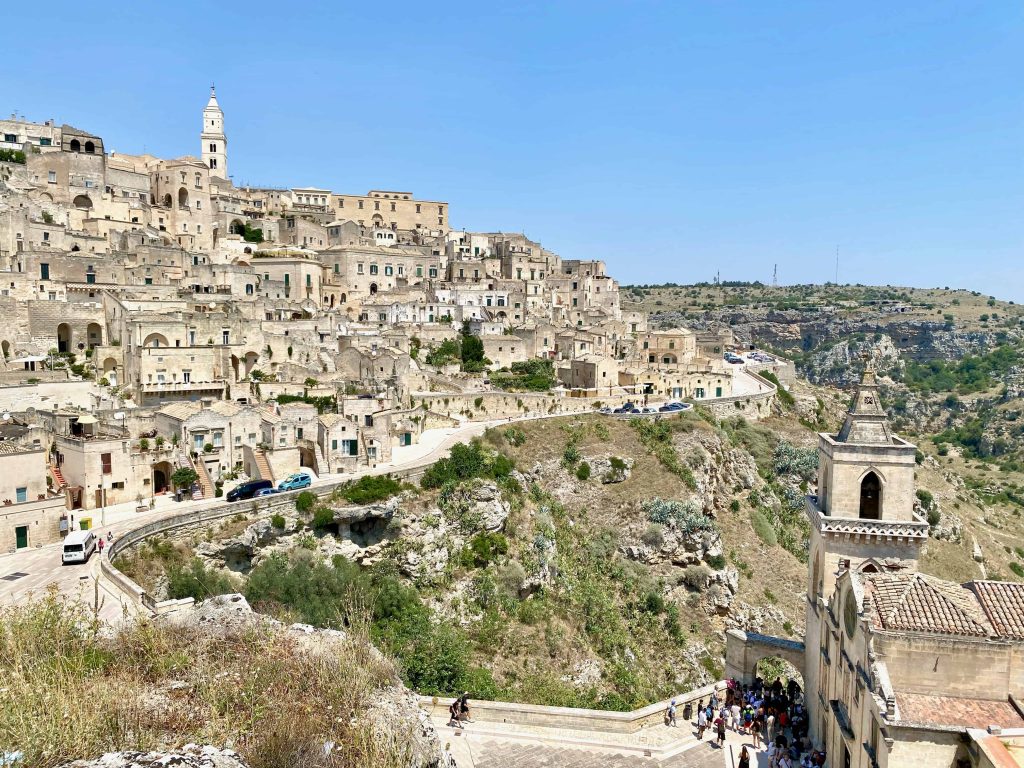
Fast-forward six years to now. My life is extremely different than it was in 2016, and here I finally was, breathing in that extraordinary place at the tail-end of a solo road trip in Puglia. This felt like a huge personal triumph on many levels and I was excited to experience Matera over the course of two days rather than two hours. It was, incidentally, approximately 502°F the entire time I was there, but despite feeling rather melty the whole time, I was undeterred from meandering through every nook and cranny that I could possibly poke my head into.
I feel like words are barely-accurate tools to describe this awe-inspiring landscape, but I’ll do my best to take you there. Matera has been inhabited since Paleolithic times, and then (as was the way in southern Italy) waves of various conquerers, including Greeks, Romans, Byzantines, and Saracens swept through over the centuries, followed finally by the more recent Italian population, which morphed into contemporary society. While early peoples lived in caves, wealthier folks built up the sides of the canyons towards the plateau above. SO MUCH has happened here; excavations and restorations are ongoing. Until recent decades, Matera was known as the “shame of Italy”, which sounds unfathomable when looking at it today. But its history is actually pretty dark and tragic for most of its existence. It was designated a UNESCO World Heritage Site in 1993 as the “most outstanding, intact example of a troglodyte settlement in the Mediterranean region”.
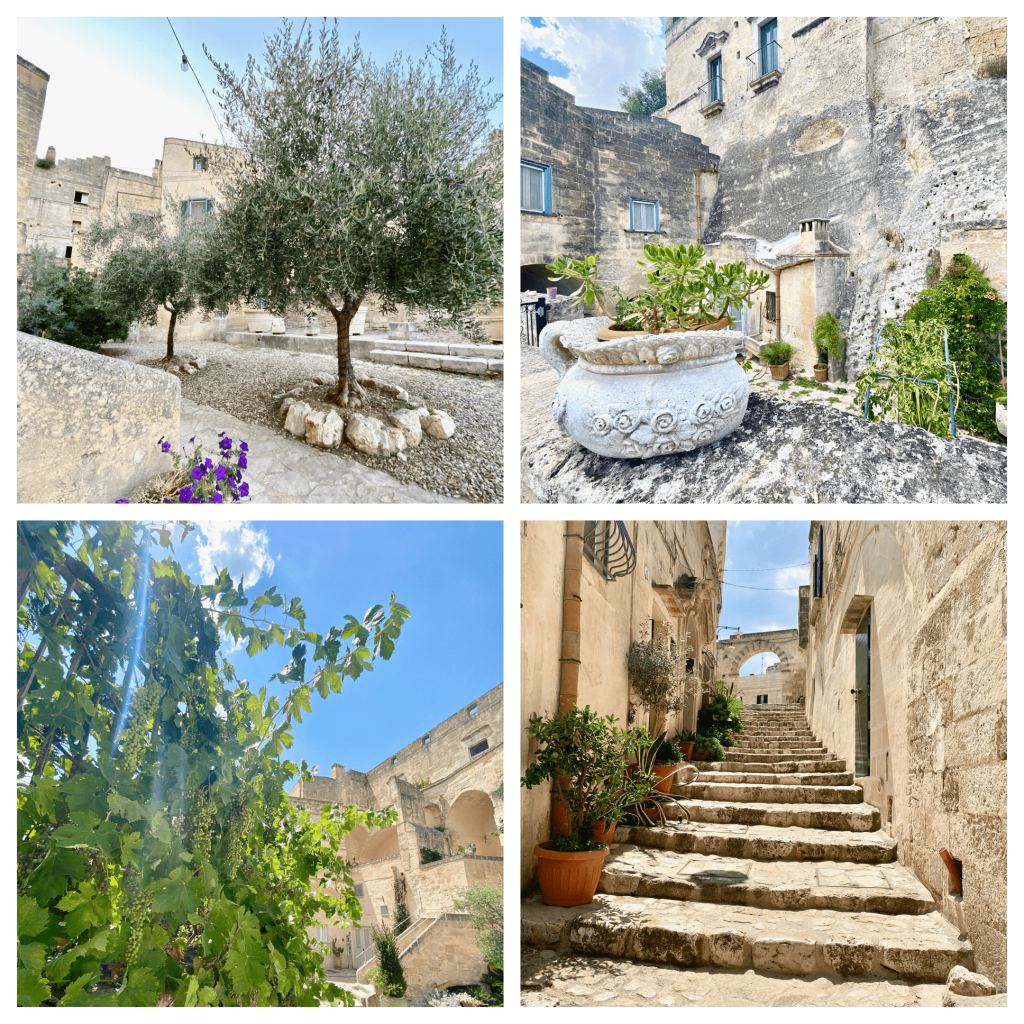
According to the guide on my walking tour, life in the caves was, let’s just say, less than hygienic. He described pretty horrific conditions that bred illness, disease, and filth; something like 4 out of 10 babies didn’t survive. Some women bore up to 25 babies in their lifetimes, such was the push to procreate. There was no clean water, families were inbred, and humans slept with their goats and sheep in the same caves. On the bright side, there was an extraordinary sense of community, as everyone worked and shared together for the common good, took care of the children, and prepared communal food. So it wasn’t all bad, and people didn’t know any different. Those people who did survive these extremely adverse conditions were extraordinarily resilient, as civilization persisted here.
As the town built up above the caves, conditions inside them deteriorated to utter squalor; no running water, continual presence of animals in human spaces, etc. The Italian government largely shrugged, until the Prime Minister Alcide De Gasperi toured the area in 1950 and declared that the caves had to be evacuated. About 20,000 inhabitants were moved to more modern housing and the caves sat abandoned for decades; Matera was certainly no desirable destination for a visit. It was known for staggering poverty and primitive life; the town itself has historically been isolated without even a major highway to Bari, the nearest larger city, until last year. Fortunately, in the past 20 or so years, things have changed dramatically.
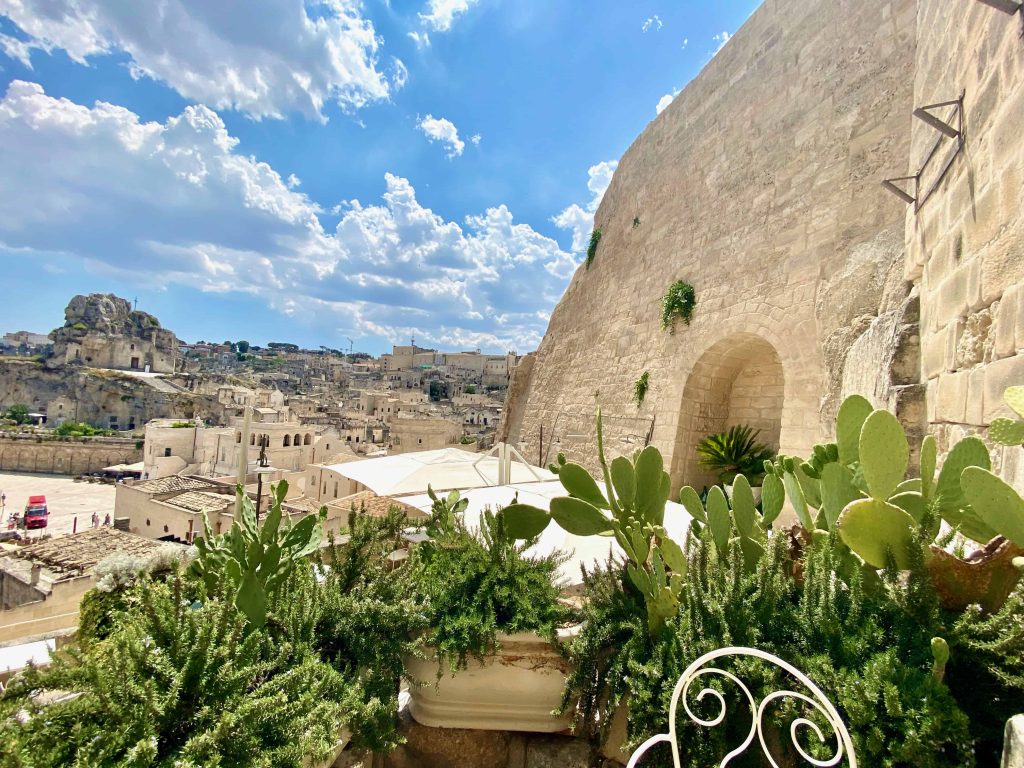
The empty caves, known as sassi in Italian, slowly began to be converted into hotels, shops, restaurants, wine cellars, and artisan workshops. Excavations allowed people to start understanding what an extraordinary history lay here. Primitive dwellings and buildings carved into sheer rock became chic and people started coming. My first trip in 2016 feels like yesterday and forever ago at the same time; it was certainly sleepier then.
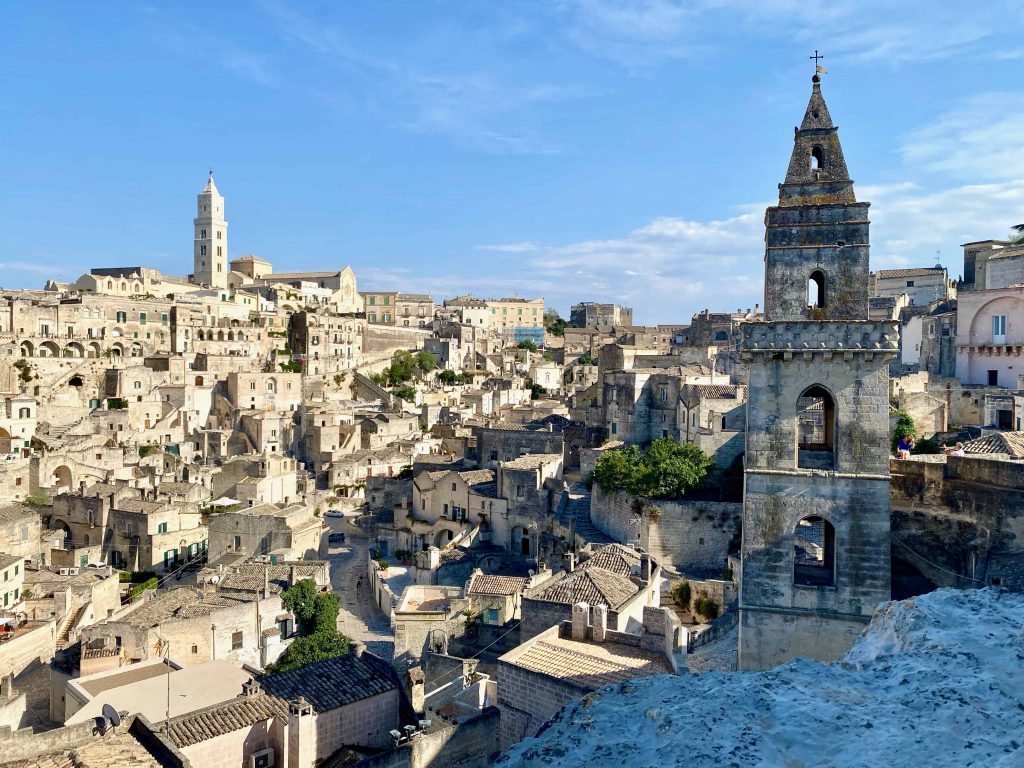
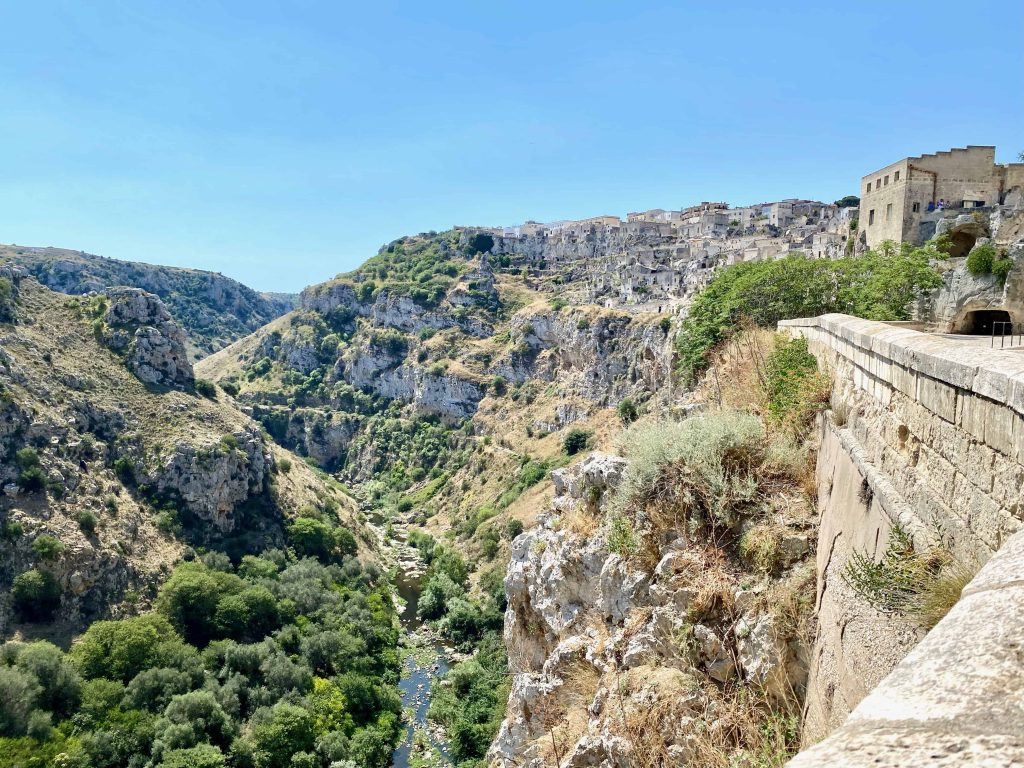
Katie Parla wrote a scathing review of Puglia/Basilicata food in 2017, and I would wager that an update is sorely needed. A LOT has changed in this cave-riddled enclave in the past five years. For one thing, Matera was crowned a European Capital of Culture in 2019, so its visibility has soared on that honor alone, not to mention its own achievements on the ground. Matera is now a destination— I was shocked at how many English speakers and other non-Italians were there this summer!
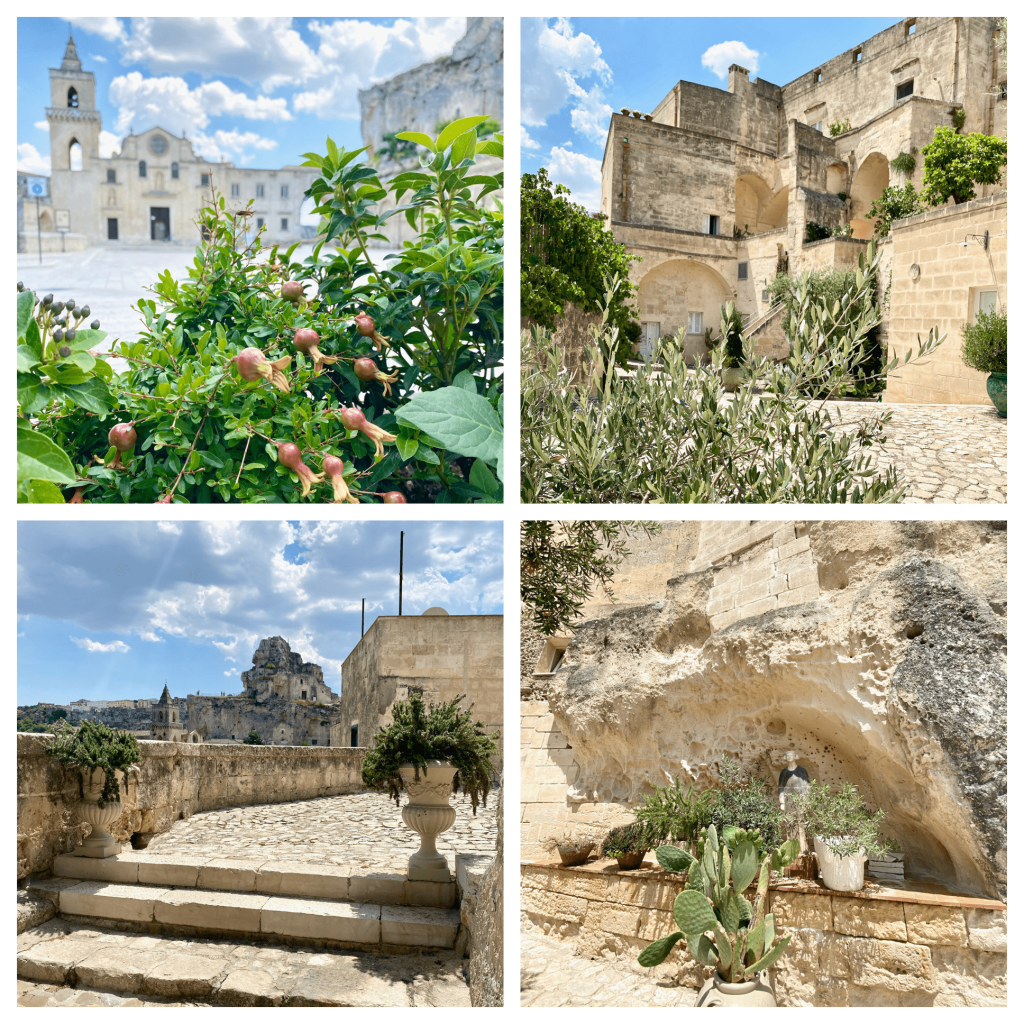
In my experience of visiting several regions of Italy, I found Matera’s cuisine to be unique. That being said, every region of Italy has dishes and flavors that are distinctive because Italy was a patchwork of separate and ever-changing kingdoms until its modern unification in 1861. Matera is on the edge of land-locked Basilicata, very near to the border of Puglia (the “heel” of the Boot), and yet it’s very clear that one is not in Puglia. While I’ve barely gotten to dive in, there were a few specific things that I noted/tasted, which I hadn’t seen elsewhere.
An aside about pasta, if I may: Pasta in the south of Italy, which has always been historically very poor compared to the more industrialized north, is made of durum wheat and water; no eggs or other additions. This yields a very firm dough that holds shapes well, versus the more tender and elastic egg-enriched dough of the northern regions. Most of the traditional Southern pasta shapes are hand-rolled/formed, such as orecchiette and cavatelli (egg dough is much easier to roll and cut into long noodles like fettuccine or tagliatelle). The women used to roll said shapes with their fingers and various textural tools as a knife or ridged gnocchi board, or thin squared-off rods called ferretti that resemble knitting needles. They rolled pieces of dough around the rods to create various shapes, including one called ferricelli, which look like elongated corkscrews. While some of the local pasta shapes were similar to those in Puglia, these I didn’t see anywhere else on my road trip. I specifically remembered them from 2016 for another reason: peperoni cruschi di Senise. These are dried and fried non-spicy red peppers produced in the region, which are often crumbled on top of pasta dishes or other specialties. One of my favorite-ever dishes from Italy was a plate of ferricelli with a light olive oil-based sauce infused with the Senise peppers and topped with fried breadcrumbs. It was seared in my memory from the first trip and I had it twice in three days in Matera on this recent trip!
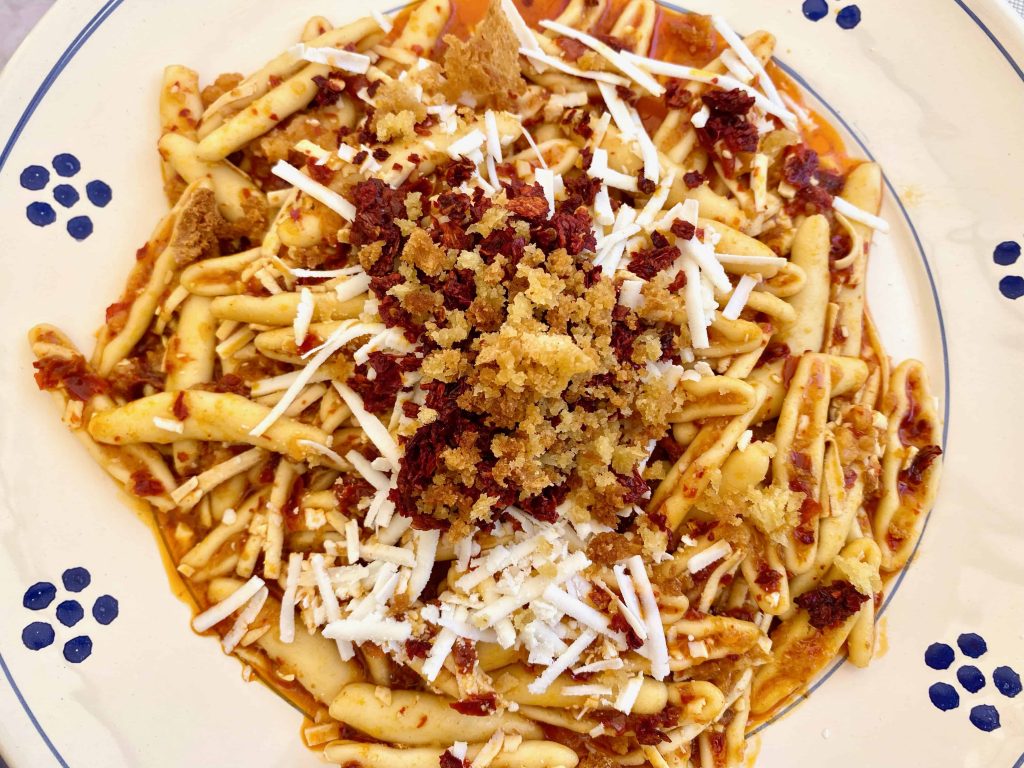
The other culinary revelation I loved from the first trip was a legume stew named crapiata, which of course has nothing to do with a similar word in English. It is made with multiple varieties of local beans, chickpeas, and grains, and I’ve not seen it anywhere else. It used to be made in large communal pots to celebrate the end of the summer harvest. Both the simple pasta dish above and crapiata are examples of cucina povera, literally “poor food”, aka the cuisine of the poor people who historically inhabited these lands and used every possible local resource to feed their people. Nothing went to waste, and in this region, the people of the sassi didn’t have much meat, so this stew was a hearty and nutrient-rich dish. This too I was excited to have again; the difference now is that Katie Parla brought light to it in the meantime, and I’m happy to have a recipe to work from in her Food of the Italian South cookbook, whereas I couldn’t find consistent information after my 2016 trip. I was very happy to see it on multiple menus in 2022, and I even bought the specific beans that I can’t find at home called cicerchie (grass peas). These are just a couple of examples of Matera’s unique culinary offerings, by no means exhaustive.
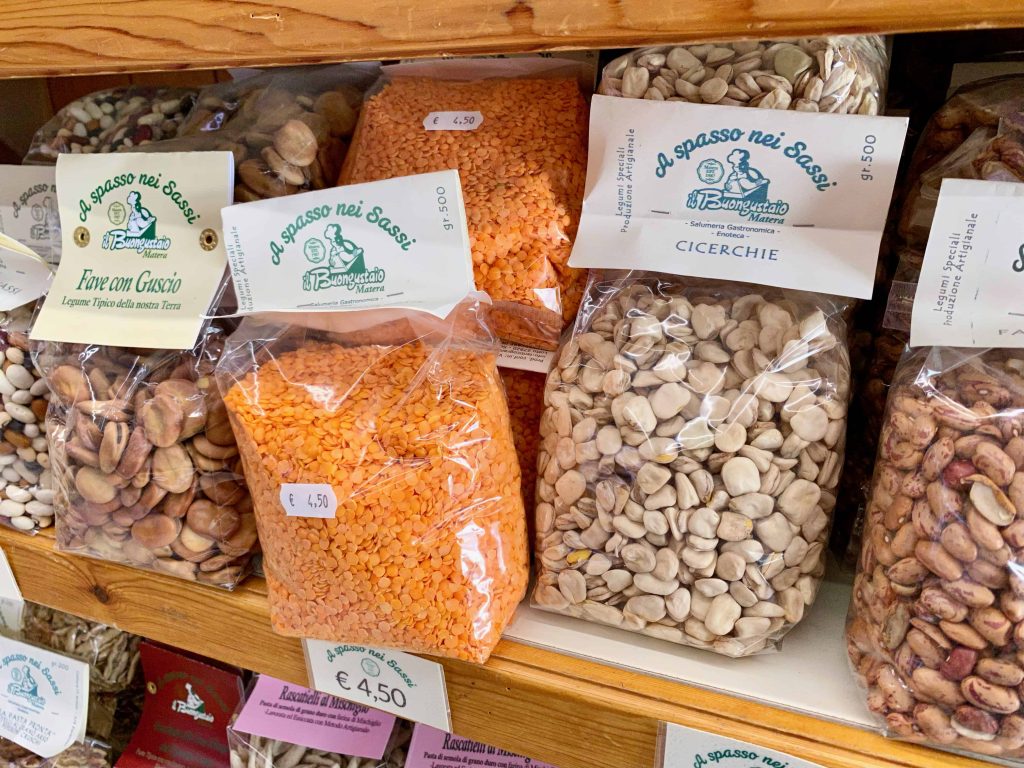
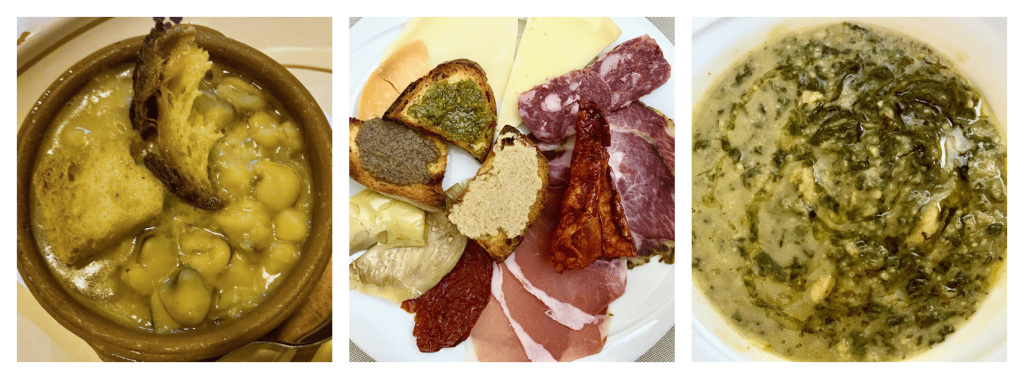
I attempted to try so many things during my visit, and I felt like such a failure when I sometimes didn’t finish my food and the waiters looked at me like I had done something wrong. ? I’d try to explain that I’d been eating all day long, but as someone who doesn’t like to waste food, their looks of pity mixed with insult cut me deep. I felt like I was collectively disappointing the Italian grandmothers. All of them. Both alive and dead.
Which brings me to dessert. To be honest, I didn’t expressly order dessert during any of my meals because there wasn’t anything that grabbed me. The restaurants seemed to offer the usual Italian desserts like tiramisù and panna cotta, which are not from this region (geared for tourists I presume), and since I was already so full from eating other stuff (plus being at the very end of a long month of gluttonous eating and traveling), I didn’t force it. My 2.5 days were spent mostly in the ancient part of the city, which does not have many pasticcerie, or pastry shops, presumably because Matera didn’t have much of a sweets tradition on account of being quite poor, and sugar was a luxury for the rich at the time. Most of what I did see encompassed things I’d seen in other places: cornetti (Italian croissant-like pastries) and various simple tarts and cakes, often with fruit marmalade and such. (What I don’t recall seeing are pasticciotti, the hallmark pastry of nearby Puglia.) It is entirely likely that the surrounding modern city of Matera does offer plenty of dessert options, and I simply didn’t have enough time to venture that far. Breakfast, on the other hand…
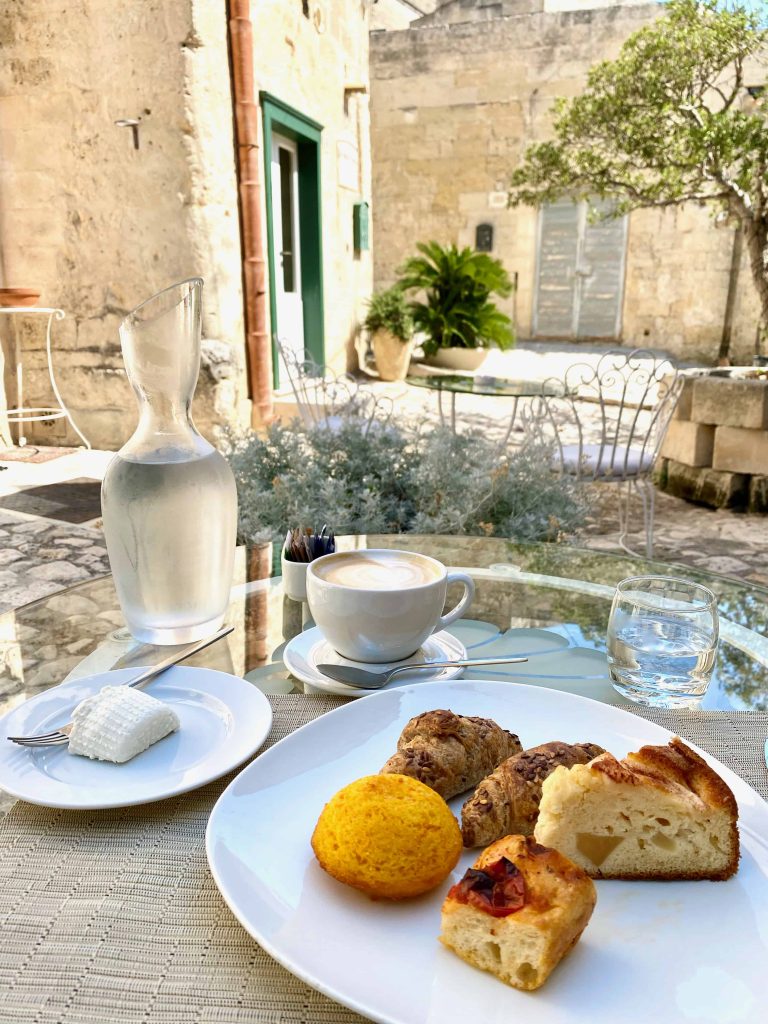
One thing I was hoping to find in some form, which I learned about from Rosetta Costantino’s beloved-by-me book Southern Italian Desserts, is the Crostata al Caprino (Goat Cheese Tart) that I’m writing about today. I couldn’t find it there during my brief trip, but was inspired to make it at home to mark the importance of Matera and Basilicata in my Italy travels. One of my favorite delights on this trip was the lovely breakfast bar at my Matera hotel. I stayed in a series of unfortunate AirBnbs up to that point (lesson learned), and it was wonderful to be taken care of in that way at my very last stop. In addition to a gorgeous spread of cakes, tarts, muffins, yogurt, and such (not all traditionally Italian), they also offered an array of local cheeses, including pecorino and caciocavallo, plus a wonderful fresh ricotta that I can still taste when I close my eyes. This tart is made with goat cheese, but its texture against the tart crust and berries took me back to that splendid ricotta.

You’ll make what is called pasta frolla, the Italian version of sweet short-crust pastry, which comes together very easily in a food processor. I had a whole bunch of dough left over, so I made several individual-sized tarts to go along with my larger one (there was enough extra mousse as well). The first time I made this recipe, I rolled the dough too thick and underbaked it, so the second time I rolled it to ¼” thick and baked it a few extra minutes, yielding a golden, crisp crust that held up very well against the filling and stayed crisp even the next day.
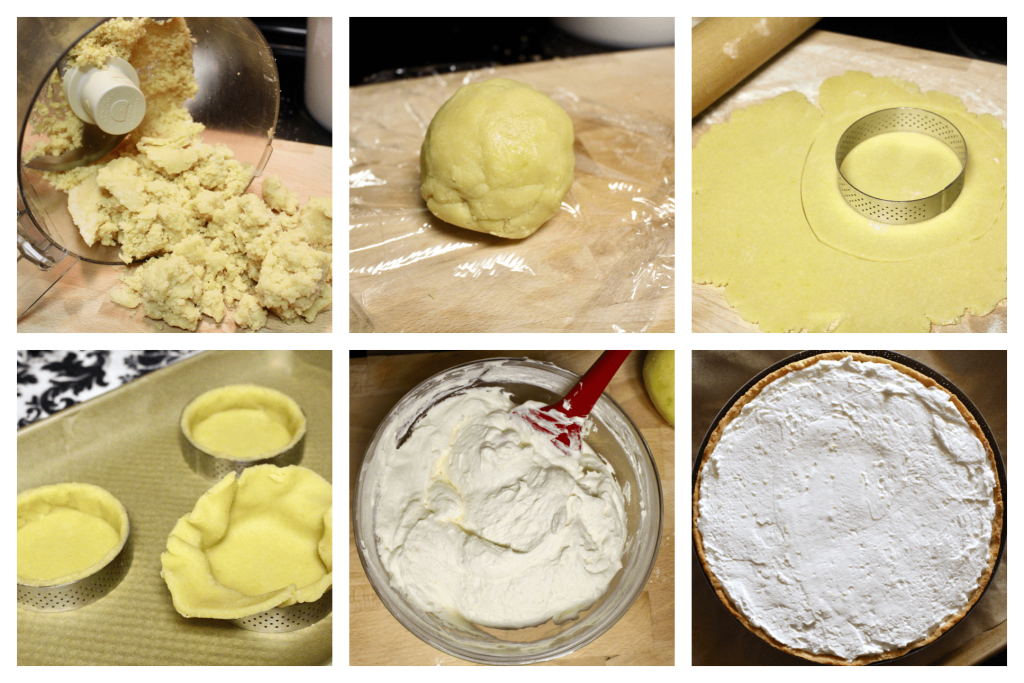
After baking the crust, you will fill it with a delicious, creamy goat cheese mousse, to be topped by fresh berries. Furthermore, you can make this for pretty much any season. In addition to berries, you could also entertain cherries or sliced stone fruit in the summer, followed by figs and honey in the Fall, and preserved fruit in the winter. Rosetta says basically anything you would pair with goat cheese on a cheese platter can work here.
I hope you enjoy this little slice of Matera and Basilicata– do consider visiting there if you want somewhere off the beaten track in Italy.
This is the 9th installment of my series on Italian regional desserts. Start here for an intro to Italian regional cuisine, my experiences traveling in Italy, and information about Italian pantry items for baking.
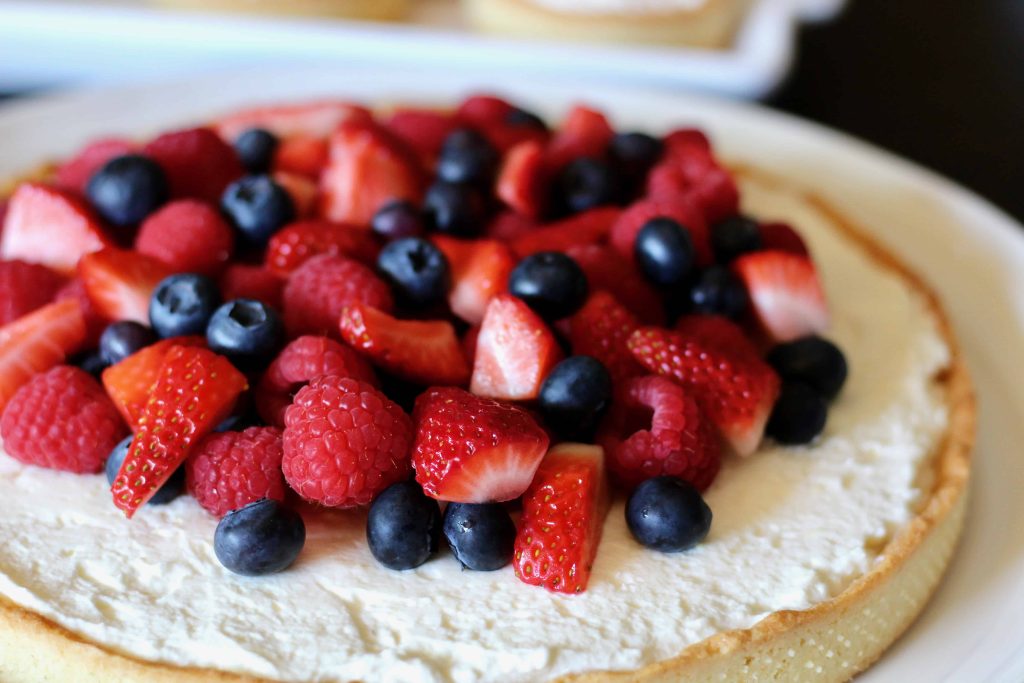
Crostata al Caprino (Italian Goat Cheese Tart)
Adapted from Southern Italian Desserts by Rosetta Costantino
8-12 servings
Use a mild, creamy goat cheese here, not the crumbly style. If you can find Italian caprino, that’d be the first choice. Chèvre (French goat cheese) is another good choice, which is easily found in many grocery stores.
For the pasta frolla (sweet short-crust pastry):
- 2 cups (264g) all-purpose flour
- ½ cup (100g) granulated sugar
- 1 teaspoon baking powder
- ¼ teaspoon kosher salt
- ½ cup (113g/1 stick/8 tablespoons) unsalted butter, at cool room temperature, cut into small cubes
- 1 whole large egg + 1 egg yolk, at room temperature
- 1 teaspoon finely grated lemon zest
For the mousse filling:
- 10 ounces (285g) fresh goat cheese, at room temperature – choose a mild, creamy variety – Italian caprino if you can find it, otherwise chèvre or something similar
- ⅔ cup (83g) confectioners’ sugar, plus more for dusting
- Finely grated zest of 1 medium lemon
- 1½ cups (360mL) heavy cream, very cold
For the topping:
- About 2 cups (300g– no need to be exact here) fresh mixed berries, other seasonal fruits, or fruit preserves of your choice
Make & bake the pastry crust: Place the flour, sugar, baking powder, and salt in the bowl of a food processor fitted with the metal blade; pulse a few times to combine. Scatter the butter cubes over the dry ingredients in the bowl and pulse until the butter is about the size of small crumbs. Whisk the egg, yolk, and lemon zest in a small mixing bowl and pour it into the food processor through the feed tube with the machine running.
Mix/pulse until the dough starts to come together around the blade; do not overmix. It should hold together easily when you pinch a small piece between your fingers.
Dump out the dough onto a clean work surface and gather it gently with your hands into a ball. Flatten it into a disk, wrap it tightly in plastic wrap, and chill in the fridge for at least 2 hours and up to overnight.
When you’re ready to assemble the tart, retrieve the dough from the fridge and let it sit at room temperature for 5-10 minutes. Place either a 9″ tart pan with removable bottom or a perforated pastry ring on a rimmed baking sheet lined with parchment paper (I used the latter– I personally like the more contemporary straight edges of the pastry ring, but if you prefer the fluted edges of a tart pan, that is quite pretty as well.)
Retrieve the dough from the fridge and roll it out to a thickness of ¼” (about a 12” circle). Carefully transfer it to your prepared tart vessel and press it evenly on the bottom and against the sides of the pan/mold. If it cracks or tears, simply press it back together. Trim the overhanging dough flush with the edge and set it aside. Prick the bottom of the dough all over with a fork, then cover the pan with plastic wrap and set it in the fridge for 30-60 minutes. (P.S. I forgot to prick the dough and it was totally fine.) Meanwhile, preheat an oven to 350°F and set a rack in the center position.
Any extra dough can either make a few small tartlets, or you can roll and cut the dough into cookies; bake this in the same way as instructed below. Alternatively, you could use a larger tart pan if you have one.
Grab the tart pan from the fridge. Grease a piece of parchment paper and carefully place it greased-side-down inside the tart pan, pressing it very gently so it makes contact with the dough all the way around. Fill the parchment with pie weights or dried beans. Blind-bake the tart shell for 15 minutes, then pull the parchment paper and weights up and out, and let the dough bake for another 10-15 minutes, or until the bottom is lightly golden (mine went for 14 minutes). Remove it from the oven and let it cool fully on a metal cooling rack.
Make the goat cheese mousse: When the crust has cooled, place the goat cheese in a medium mixing bowl and smash it down with a rubber spatula to loosen it. Add the confectioners’ sugar and lemon zest and mix until completed blended and smooth; set aside.
In a separate bowl, whip the cold heavy cream with an electric mixer until stiff peaks form. Fold about ¼ of the whipped cream into the goat cheese mixture with the spatula to lighten it a bit, then dollop the rest of the cream on top and fold it in gently, taking care not to lose too much air in the process. The mousse should be creamy and fluffy, both sweet and a little tangy from the goat cheese.
Assemble the crostata: Scrape the mousse into the tart shell and spread it all the way to the edges with a small offset spatula, smoothing the top. Cover the crostata with plastic wrap and refrigerate it for 2-4 hours to set the mousse, or up to overnight.
When ready to serve the crostata, carefully remove it from the tart pan and slide it onto a serving platter. If using a pan with a removable bottom, you can leave the bottom piece or slide a knife between the tart and the pan to pop the pan away from the crust. If using a tart ring with no bottom, slide a very large spatula or something similar underneath to safely move it to your serving plate.
Scatter the fresh berries (or your choice of seasonal fruit) over the mousse in a mound or decorative pattern, then dust it with confectioners’ sugar if desired. Cut it into wedges with a sharp knife to serve.
Leftover crostata can be stored in the fridge for up to two days in an airtight container.
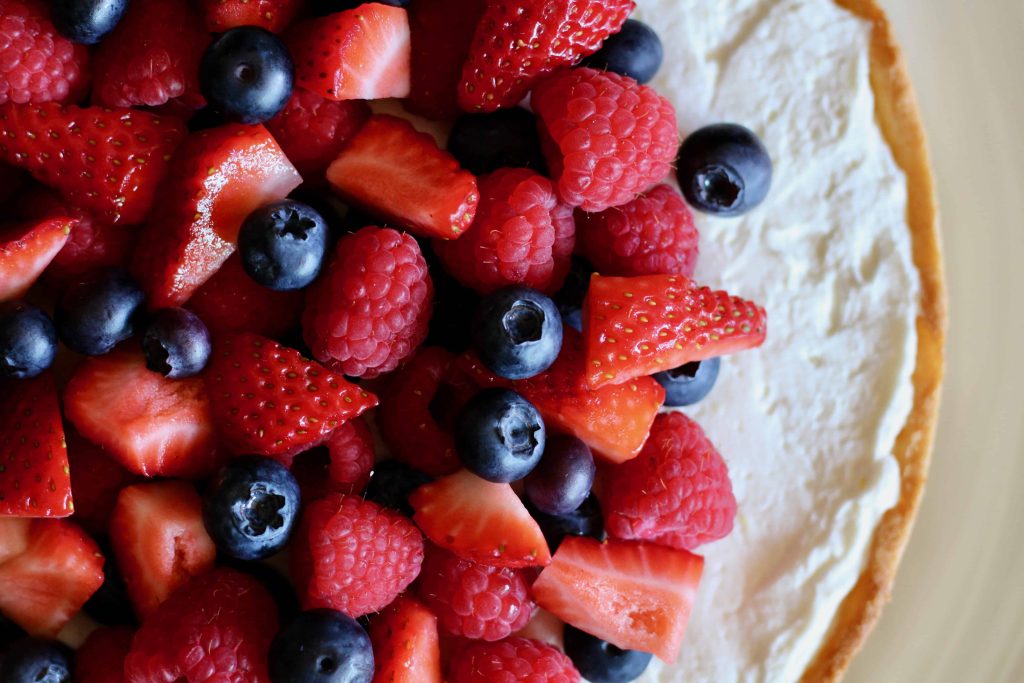

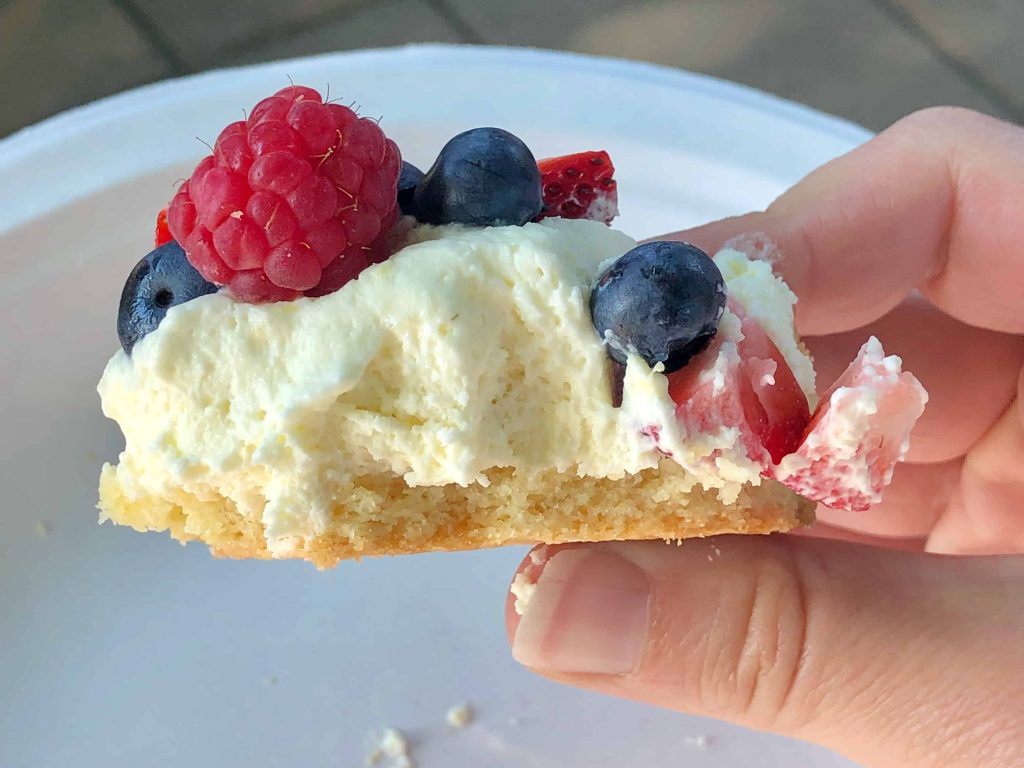
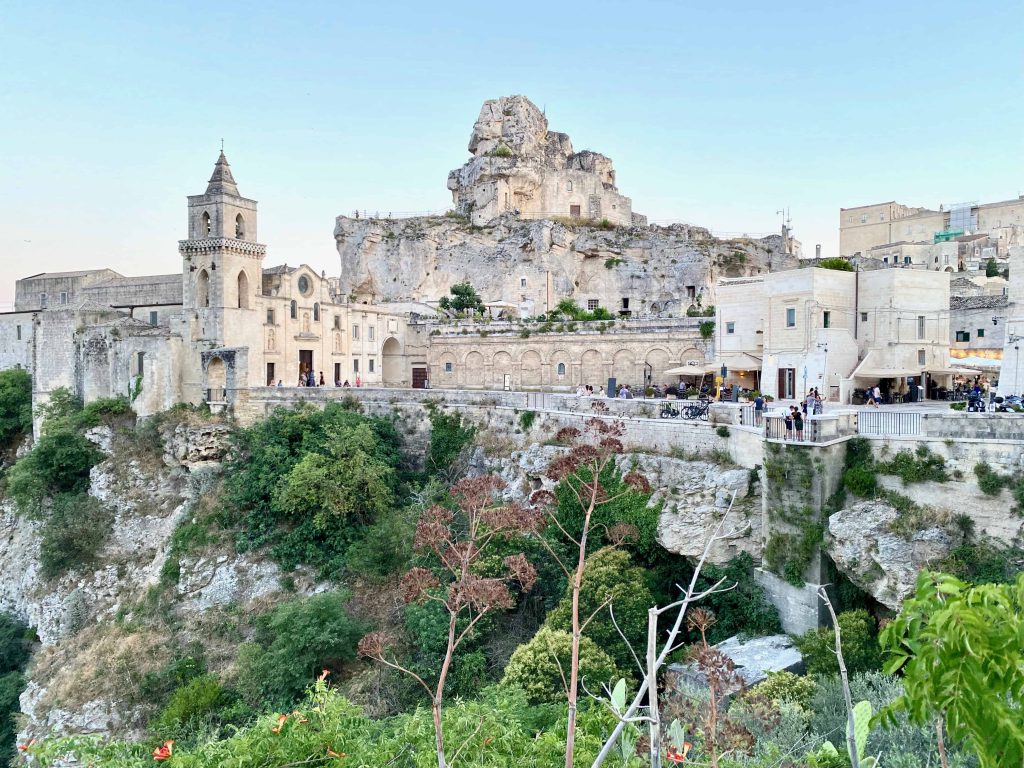
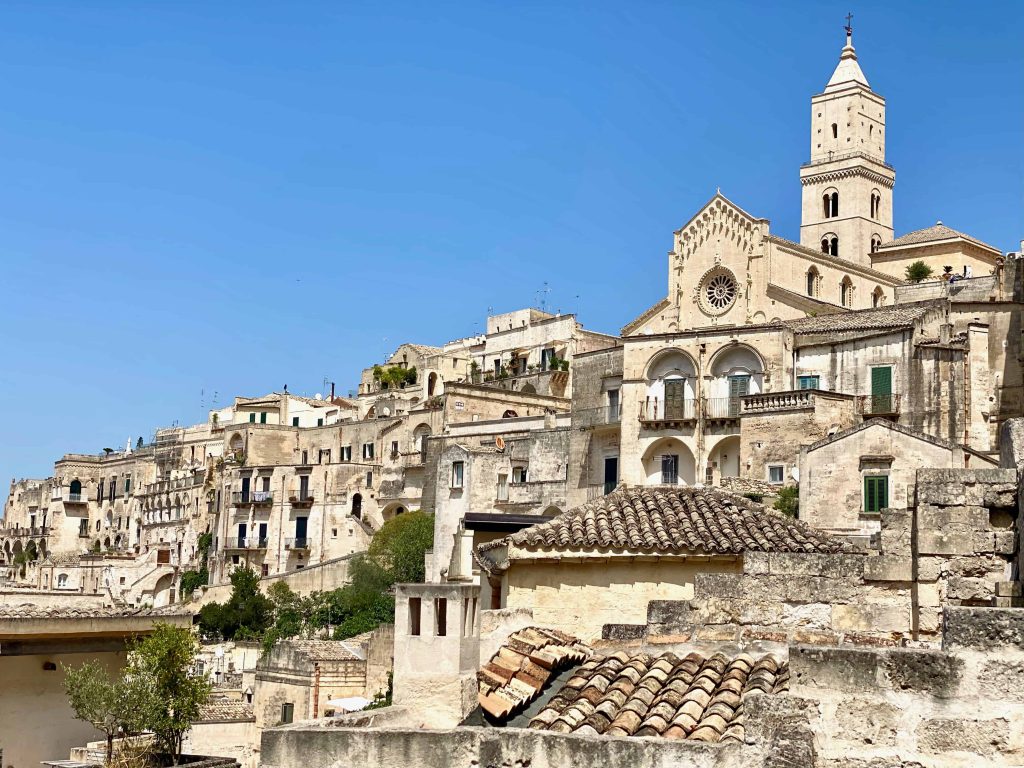
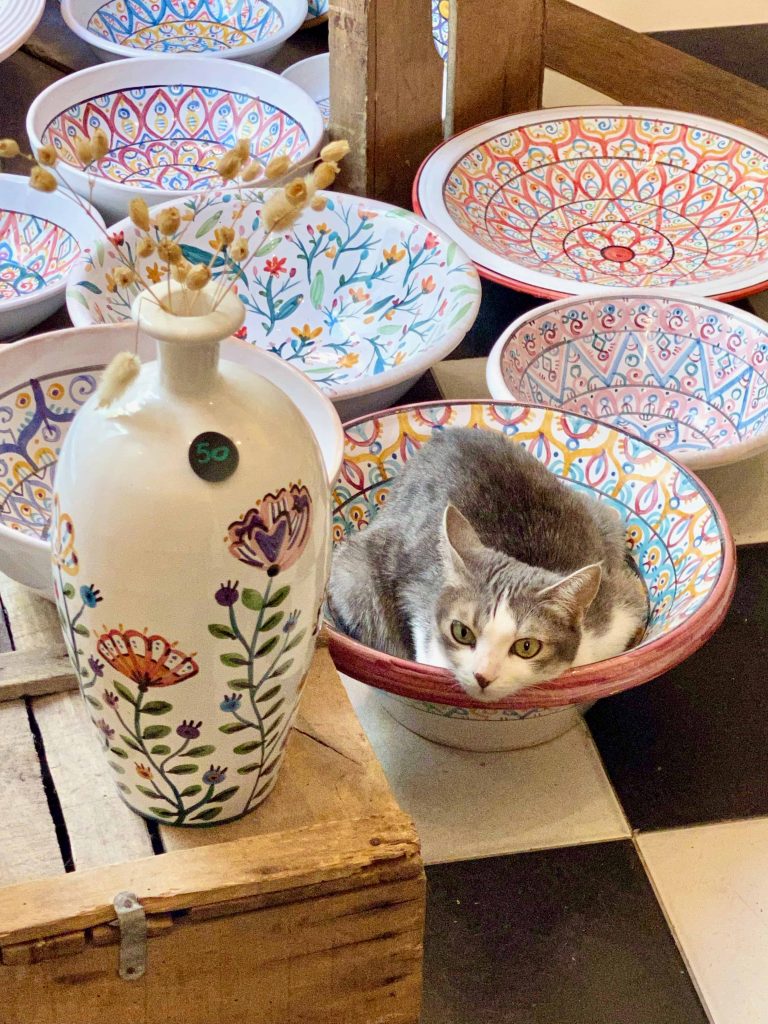
© Dafna Adler & Stellina Sweets, 2022.




